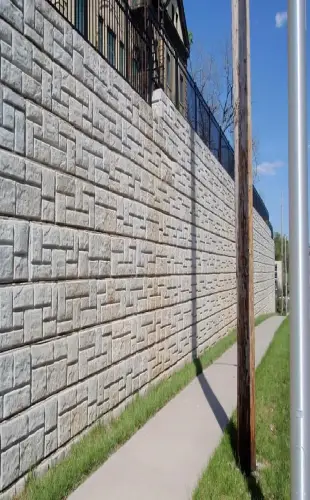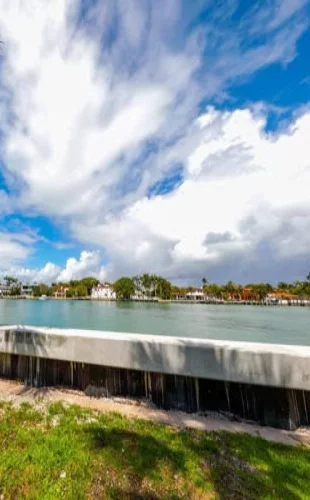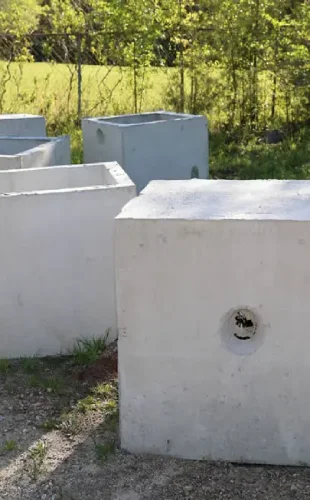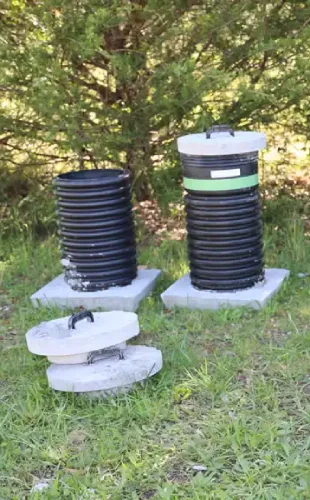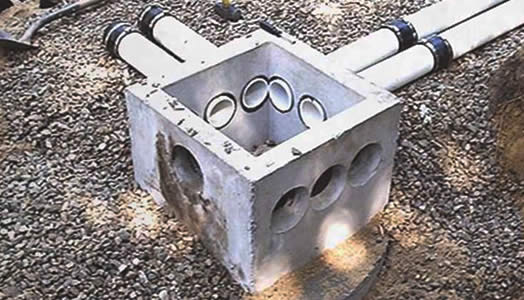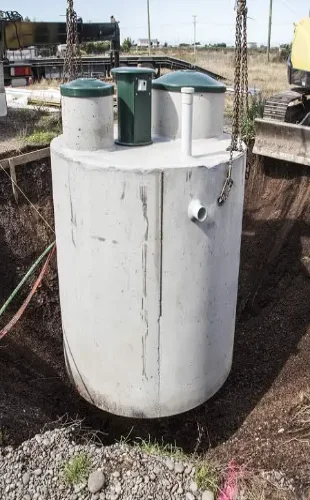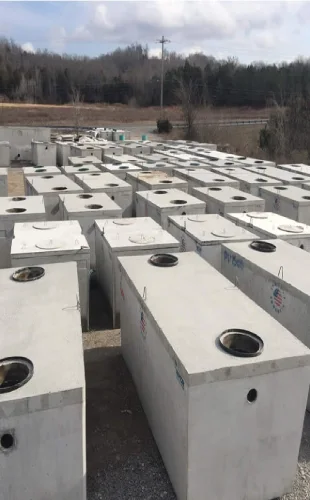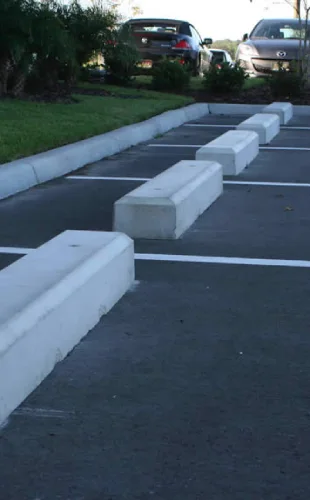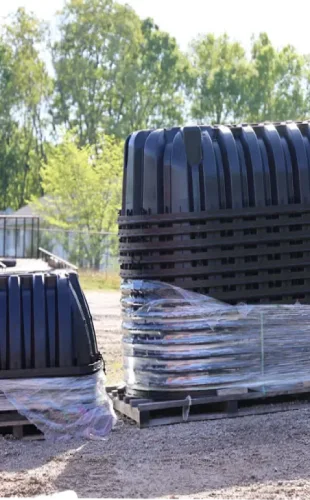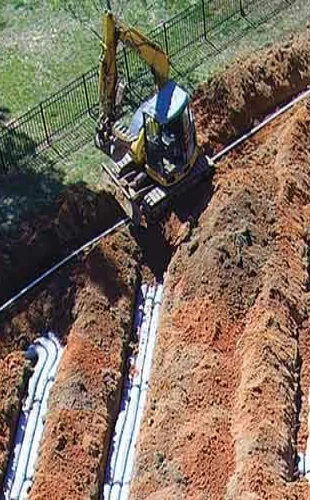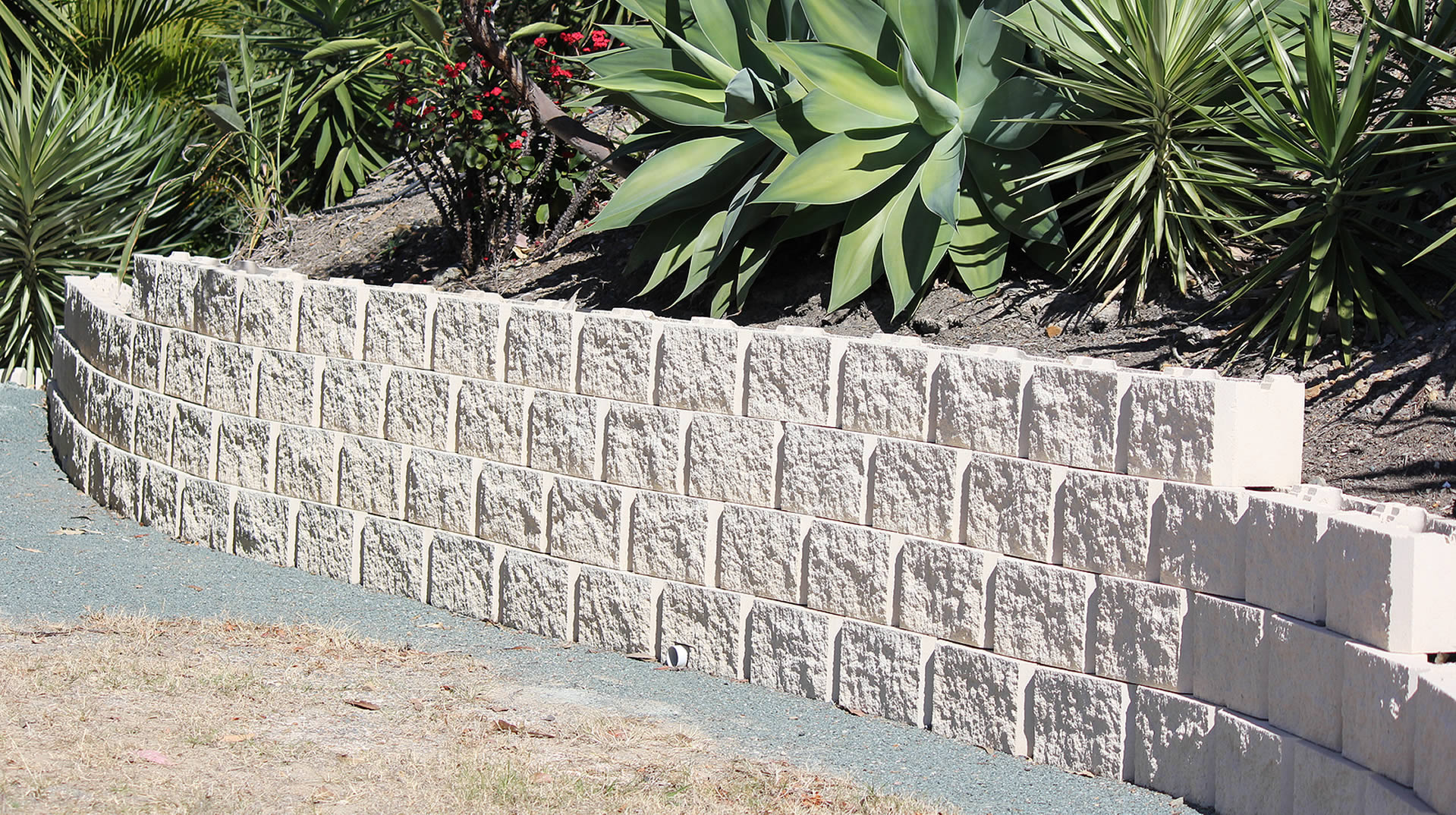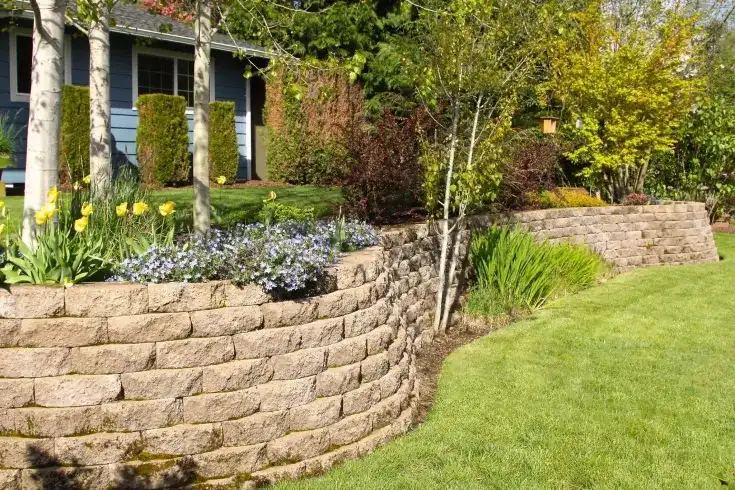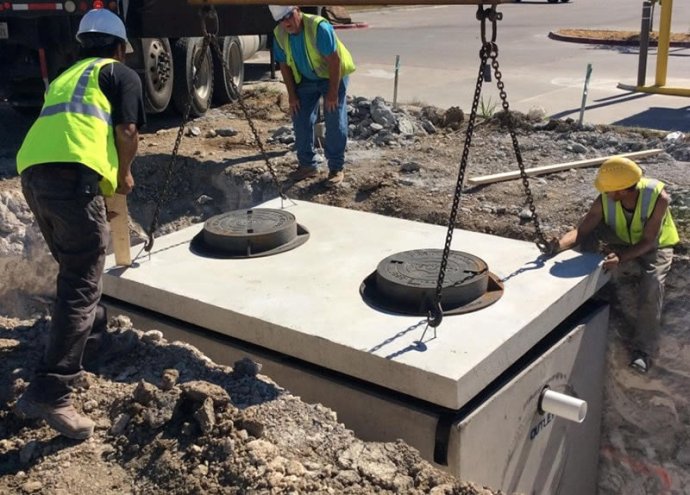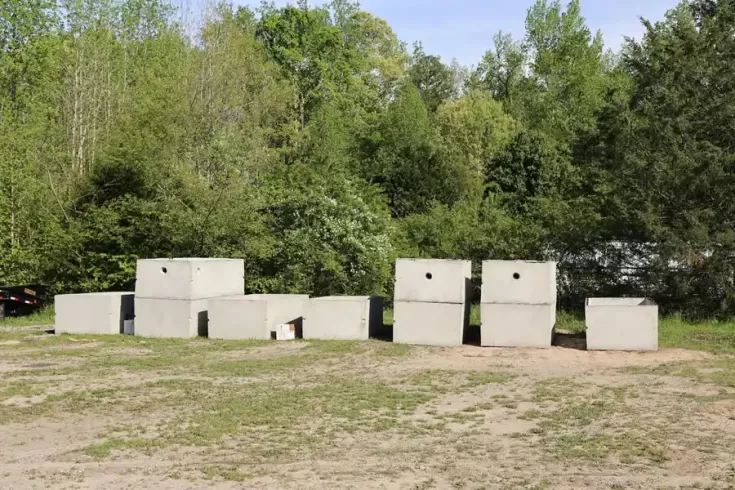Managing Water Flow
Proper site drainage is critical for the stability of retaining walls. When water accumulates behind a wall, it can create hydrostatic pressure that compromises the wall’s integrity. To prevent this, incorporating efficient drainage systems is essential. Common solutions include:
- Weep Holes: Small openings at the base of the wall allow water to escape, and reduces pressure buildup. These holes are strategically placed to ensure they effectively channel water away from the wall, which prevents waterlogging and helps to maintain the structural integrity of the retaining wall.
- Drainage Pipes: Perforated pipes placed behind the wall collect and divert water away from the structure. These pipes are usually surrounded by gravel to facilitate easy water flow into the pipe, which then safely carries it away from the retaining wall area, reducing the risk of water pressure buildup.
- Gravel Backfill: A layer of gravel behind the wall facilitates water flow toward the drainage pipes or weep holes. Gravel is a key component in creating a free-draining backfill, ensuring that water does not accumulate but is efficiently directed away from the wall.
As a leading retaining walls supplier, Garrett Precast emphasizes the importance of these drainage measures. Without them, water can undermine the wall’s foundation, leading to expensive repairs or even catastrophic failure. Proper drainage prolongs the life of the retaining wall and also ensures it performs its function effectively under a variety of weather conditions.
Dealing with Bridge Abutment Piles
Bridge abutments often pose a unique challenge for retaining walls. Piles driven into the ground to support bridge structures can obstruct the area where the retaining wall needs to be constructed. Handling these obstructions requires careful planning and engineering. Some strategies include:
- Adjusting Wall Placement: Shifting the retaining wall's position to avoid pile interference, though this might not always be feasible. This method involves meticulous site analysis and planning to determine the most effective placement that still meets the structural requirements of the project.
- Custom Wall Designs: Designing walls with cutouts or recesses to accommodate existing piles. These designs are highly specialized and require precise engineering to ensure the retaining wall remains structurally sound while accommodating the piles.
- Integrated Pile Support: Incorporating the piles into the retaining wall’s structure to improve stability. This approach can sometimes turn an obstruction into an asset, using the piles to add additional support to the retaining wall.
Retaining Walls for Various Structures
Retaining walls are not limited to supporting bridge abutments; they are essential for various other applications, each with its unique challenges. For instance:
- Residential Properties: Retaining walls are often used to create level spaces in sloped yards, preventing soil erosion and providing aesthetic appeal. They can also serve as structural supports for garden beds, terraces, and even seating areas in outdoor spaces.
- Commercial Developments: In commercial areas, retaining walls support parking lots, roadways, and buildings, requiring durable designs to handle heavy loads. These walls must be designed to withstand constant vehicular traffic, which adds stress to the structure.
- Industrial Sites: Industrial applications might involve retaining walls for large equipment storage areas or to stabilize earth around construction sites. These walls need to be particularly strong and durable to support the heavy machinery and equipment commonly found in industrial settings.
In each scenario, the role of a reliable retaining walls supplier like is to ensure that the materials used for the walls are constructed to your needs.
Special Considerations
Certain conditions present additional complexities when constructing retaining walls. For example:
- Seismic Activity: In earthquake-prone areas, retaining walls must be designed to withstand seismic forces. This may involve using flexible materials or incorporating movement joints. Seismic design considerations ensure that the retaining wall can absorb and dissipate energy from seismic events and prevent structural failure.
- High Groundwater Levels: Sites with high groundwater can pose a risk of water pressure buildup. Advanced drainage solutions, such as deep well systems or impermeable barriers, may be necessary. These solutions require thorough geotechnical analysis to design systems that effectively manage groundwater levels and protect the retaining wall.
- Heavy Loads Areas subjected to heavy loads, such as those near highways or large structures, require retaining walls with enhanced load-bearing capacities. Engineering these walls to handle significant weight and pressure involves careful material selection and structural design to ensure they remain stable and functional under heavy load conditions.
Do You Need Reliable Retaining Wall Solutions?
Garrett Precast is the go-to retaining walls manufacturer for projects of all sizes. Our dedication to quality will ensure that your walls will stand the test of time. We pride ourselves on our ability to deliver durable, reliable, and efficient retaining wall solutions that will ensure the success of your projects. Contact us today to find out what we can do for you.
